709-218-7927 The Landfall Garden House 60 Canon Bayley Road CANADA A0C 1B0 |
|---|
Vermicomposting – Castings Separator
Sunday, August 29, 2010
I wanted to find a use for a well-rinsed detergent bottle, and I reasoned that it might make an effective separator of castings.
The theory is that, charged with material from the vermicomposter and some worms, and kept moist, the worms will excrete material through the narrow neck.
I cut the base off the bottle, then I used a leather punch to punch four holes just below the semi-rigid rim of the bottle.
I have placed a black book inside the bottle so that you can see two of the holes in contrasting colour.
Take two rather nice coat hangers of equal size.
I didn’t know until this morning that not all coat hangers are created equal!
Cut the hanger exactly mid-way along the bottom rail.
Bend each cut end around the jaws of your pliers to form a hook.
Straighten the shoulders of the hangers.
The bottle is now filled with material from the compost bin (Please see “”) and has a rinsed milk-bag stretched around the neck, to catch any castings that fall.
Suspension is by a series of coat-hanger wire hooks from a picture rail.
Tuesday, August 31, 2010
Ignore the clump of matter to the left hand side of the bag; that spilled as I was filling and mounting the jug.
But Look!
Immediately below the mouth of the bottle a few castings have appeared overnight!
A day later – a few more castings.
Sunday, September 05, 2010
I needed some more worms for this project, so I tipped my bag of material onto a 67-liter garbage bag and harvested about a dozen small worms
I tipped these into the top of the inverted jug, so let’s see how soon the process accelerates.
Sunday, November 28, 2010
After 12 weeks I decided to terminate the experiment by exploring the contents of the green pop bottle.
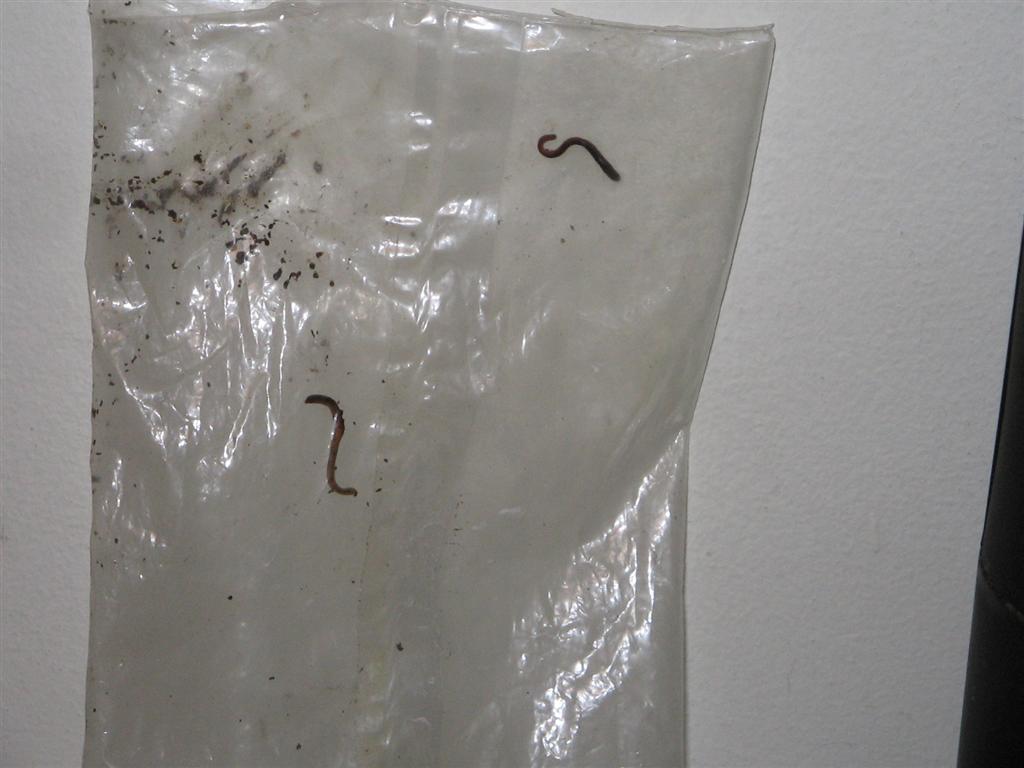
I removed the bag to find two small worms navigating the inside slopes. Small, but healthy-looking.
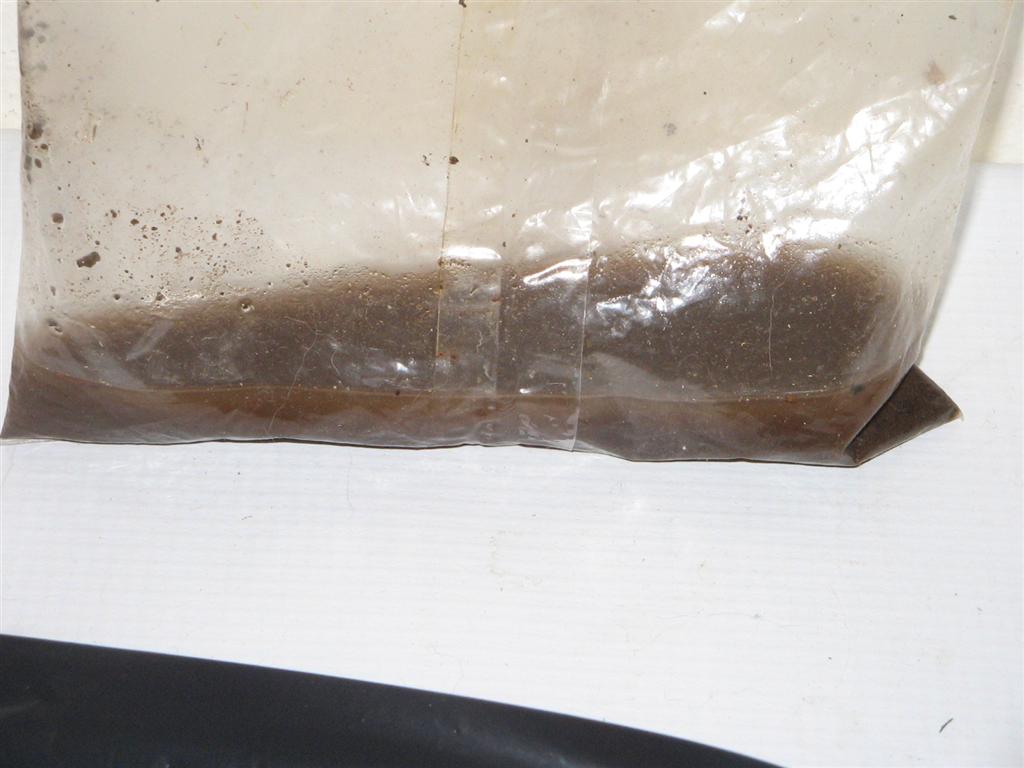
Quite a bit of water had drained out. Perhaps the contents were too dry; I have neglected inspection of the moisture content.
The water hides the volume of castings separated out. Next time I’ll let the castings drain into an open container so that excess water cannot accumulate.
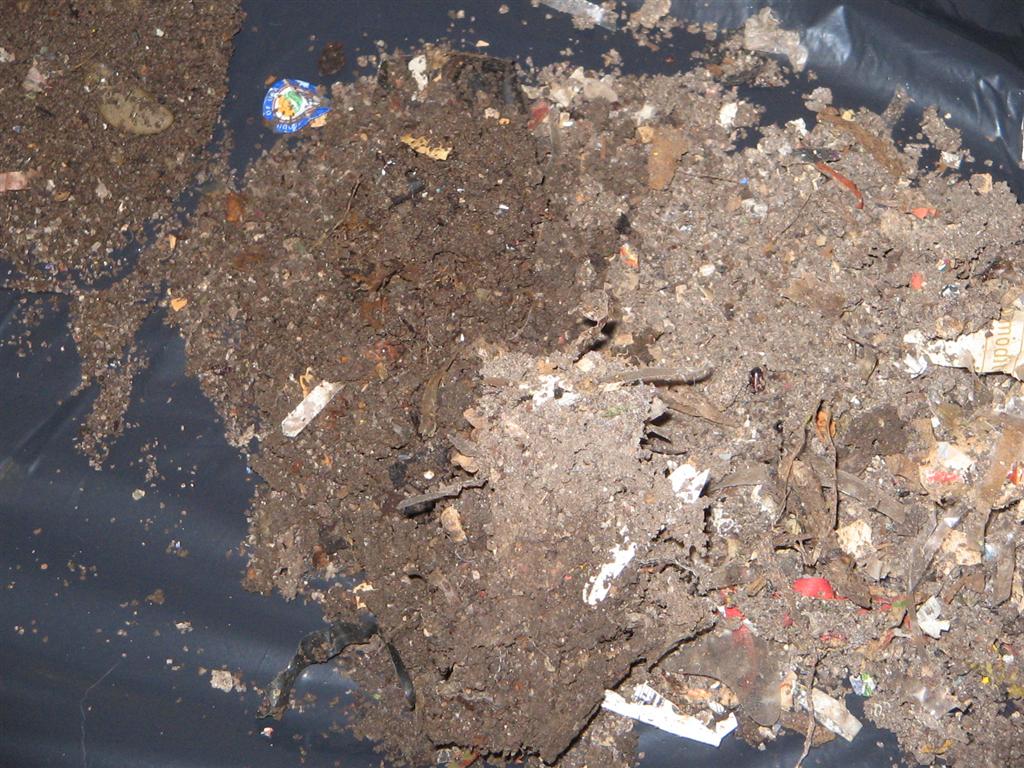
I found similar results to that of my Demonstration .
The mixture was half dried-out, half moist.
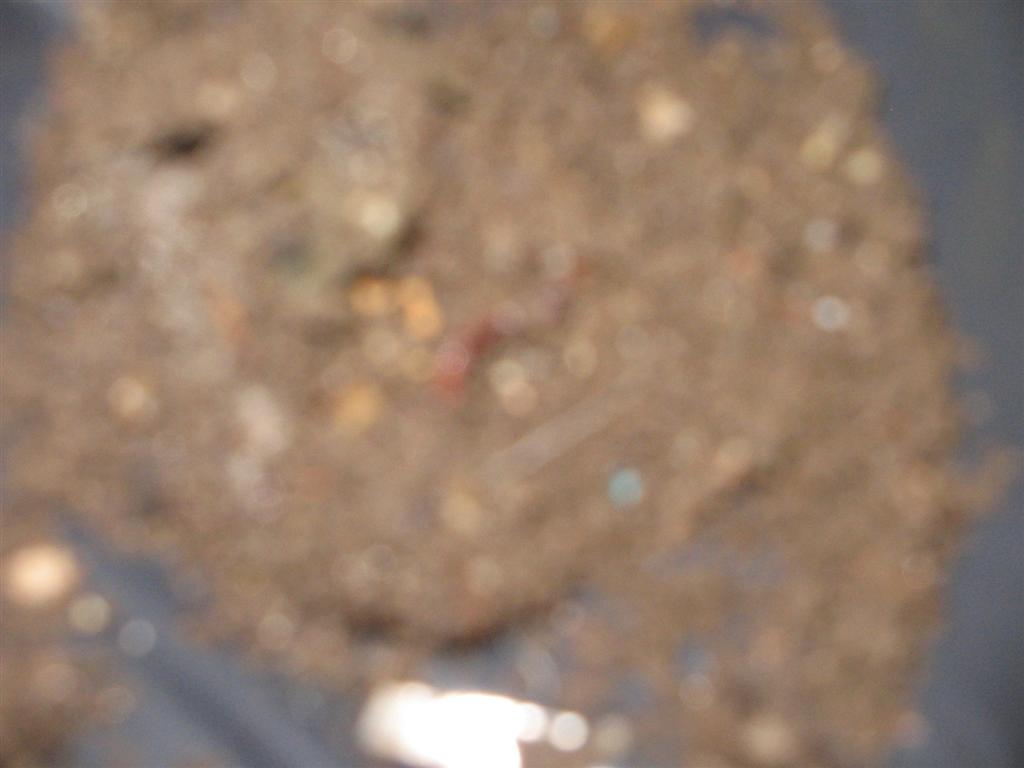
Worms are alive!
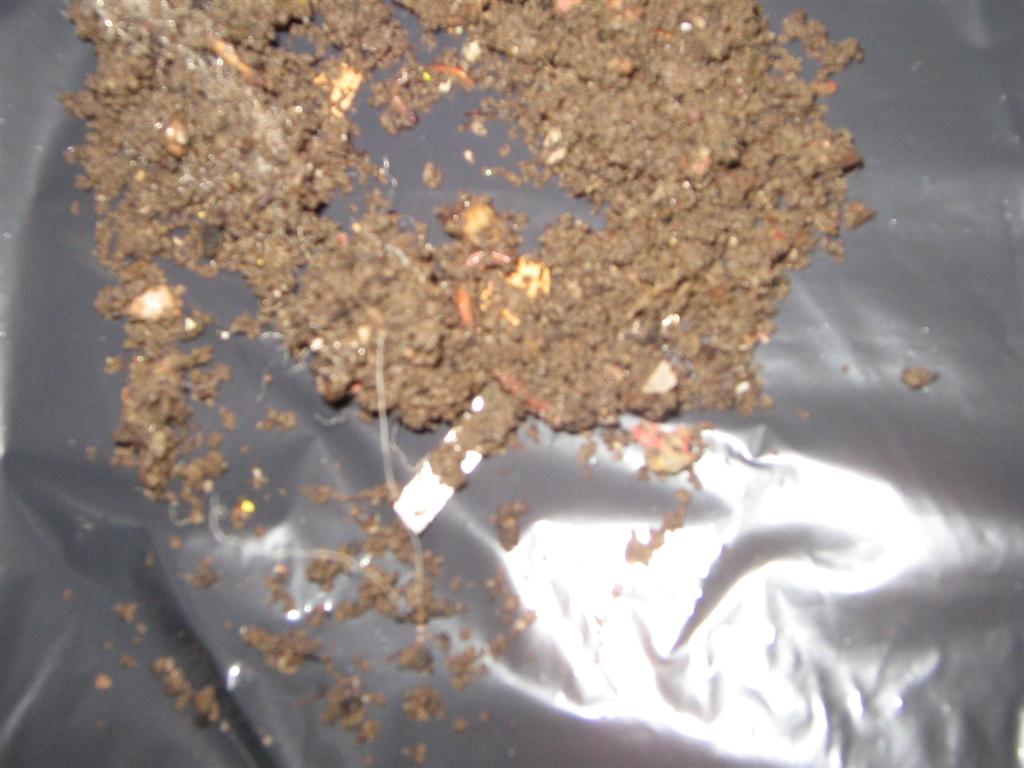
Here is a better shot of a healthy-looking worm.
Conclusion
What did I learn?
A regular 2-liter pop bottle can make a great little laboratory for a 2-month or 3-month experiment in catsings separation.
In particular I need a better method of separating castings from leachate.
Loading
709 218 7927 CPRGreaves@gmail.com
Bonavista, Wednesday, June 03, 2020 11:08 AM
Copyright © 1996-2020 Chris Greaves. All Rights Reserved.